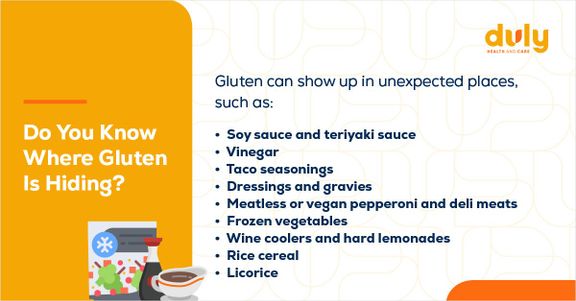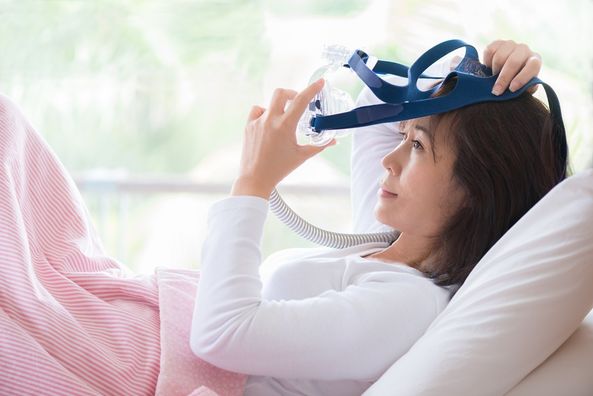That little “(GF)” next to menu items, the gluten-free products lining the grocery store shelves, the celebrities who swear that cutting out gluten has helped them lose weight … we’re constantly hearing the term “gluten-free.”
If you can eat gluten – a protein found in grains like wheat, rye, and barley – without problem, gluten-free diets might seem like a fad. But for people who cannot eat gluten, these diets can be lifesaving.
Several medical conditions can make someone unable to eat gluten, including celiac disease, gluten sensitivity (also called “gluten intolerance” or “non-celiac gluten sensitivity”), and wheat allergies.
So, what are the differences?
Celiac Disease vs. Gluten Sensitivity
Let’s start with the big two players in the gluten-free game: celiac disease and gluten sensitivity.
The symptoms of celiac disease and gluten sensitivity are practically identical:
- Nausea and diarrhea
- Bloating, constipation, and gas
- Fatigue
- Headaches and brain fog
- Joint pain
- Depression
However, the two conditions aren’t exactly the same.
Celiac disease is an autoimmune disorder. When gluten enters your digestive system, it triggers your immune system to create antibodies (proteins that fight foreign substances like viruses or bacteria). These antibodies damage the lining of your small intestine, interfering with the intestine’s ability to absorb nutrients.
Gluten sensitivity is when you have a bad reaction to gluten but don’t test positive for celiac disease or a wheat allergy. It doesn’t cause the same type of intestinal damage as celiac disease. The exact cause of gluten sensitivity isn’t well understood.
Also read: Gastrointestinal Symptoms You Should Not Ignore
Wheat Allergies and the Myth of the Gluten Allergy
Some people say they have a gluten allergy, but it’s not possible to be allergic to gluten. It’s likely that they are allergic to wheat – which contains gluten – and they are mistakenly attributing their symptoms to gluten.
There are several differences between wheat allergies, celiac disease, and gluten sensitivity:
- You can grow out of a wheat allergy and may be able to grow out of gluten sensitivity, but you cannot outgrow celiac disease.
- Allergic reactions can happen in minutes up to an hour. Symptoms of celiac disease or gluten sensitivity typically start within a few hours or days.
- Wheat allergies can cause some of the same symptoms, but they can also bring on reactions like hives, swelling in your mouth or throat, or even life-threatening anaphylactic shock.
Also read: Food Allergy
Which One Is It – and What Happens Next?
This can get a little tricky. There are tests to diagnose celiac disease and wheat allergies, but there Isn’t currently a test for gluten sensitivity. It’s diagnosed if you have symptoms after eating gluten and don’t test positive for celiac disease or a wheat allergy.
The only treatment for both celiac disease and gluten sensitivity is a gluten-free diet – but there’s a catch. If you have celiac disease, you must go gluten-free permanently. However, if you have non-celiac gluten sensitivity, you may only need to avoid gluten temporarily. Experts recommend following a gluten-free diet for about 1 to 2 years before getting tested again.
For a wheat allergy, avoid wheat altogether and carry epinephrine (emergency medication for anaphylactic shock) if you’re at risk for severe reactions.
If you believe you might have celiac disease or gluten sensitivity, make an appointment with a Duly Health and Care gastroenterologist.
Make sure that you go through the testing process and get a diagnosis from your provider before giving up gluten on your own. Cutting out gluten when you don’t need to likely won’t improve your own health and can lead to problems like:
- Decreased fiber intake, which can negatively affect digestion
- Vitamin or mineral deficiencies – unlike foods with gluten, gluten-free foods are often not fortified with nutrients like iron and folic acid
- Inaccurate test results for celiac disease if you get tested in the future
- Weight gain and obesity, since gluten-free foods tend to be high in fat and sugar
Also read: Everything You Know About Starting a New Diet is Iffy (Well, Maybe)
Living a Gluten-Free Life
Being gluten-free can make dining at restaurants a bit difficult or stressful. Fortunately, it’s becoming a lot easier to find gluten-free products and menu items.
If you’re new to the world of gluten-free eating, it can be overwhelming at first. Here are some pointers to get started:
Be Restaurant-Smart
Check out menus ahead of time to make sure there are gluten-free options. When you’re at the restaurant:
- Let the wait staff know – and make sure to clearly explain that anything with flour, breadcrumbs, or soy sauce will make you sick.
- Go for simple dishes that don’t have sauce or coating.
- Don’t assume that something is gluten-free. For instance, some chefs add pancake batter to omelets.
- Ask them if they use a clean or separate prep space and if they clean the grill before cooking gluten-free food.
Beware of Hidden Gluten
Gluten can be sneaky and make its way into foods you wouldn’t expect to find it in. It’s critical to look for hidden sources of gluten to make sure that you don’t accidentally ingest it.

Know Your Labels
If you can’t eat gluten, any packaged product that is regulated by the US Food and Drug Administration (FDA) and labeled “gluten-free” is considered safe.
Even if a food is labeled as “gluten-free,” it’s a good idea to double-check the ingredients in case there was a labeling or packaging error. Avoid foods with any of these ingredients:
|
|
Notice a warning that says, “may contain wheat” or “processed on equipment that handles wheat” on something that’s marked “gluten-free?” If you have celiac disease or gluten sensitivity, you’re in the clear – these warnings aren’t relevant to a product’s gluten content. But if you have a wheat allergy, take these warnings seriously to avoid the risk of eating something that was accidentally contaminated with wheat.
Whether you need to avoid gluten or just avoid wheat, it’s not always easy to live with a chronic condition that limits what you can eat. But by learning how to quickly determine which foods are safe and to be proactive when you’re going out to eat, you don’t need to let celiac disease, gluten sensitivity, or wheat allergies stand in the way of living a healthy and normal life.
Health Topics:








